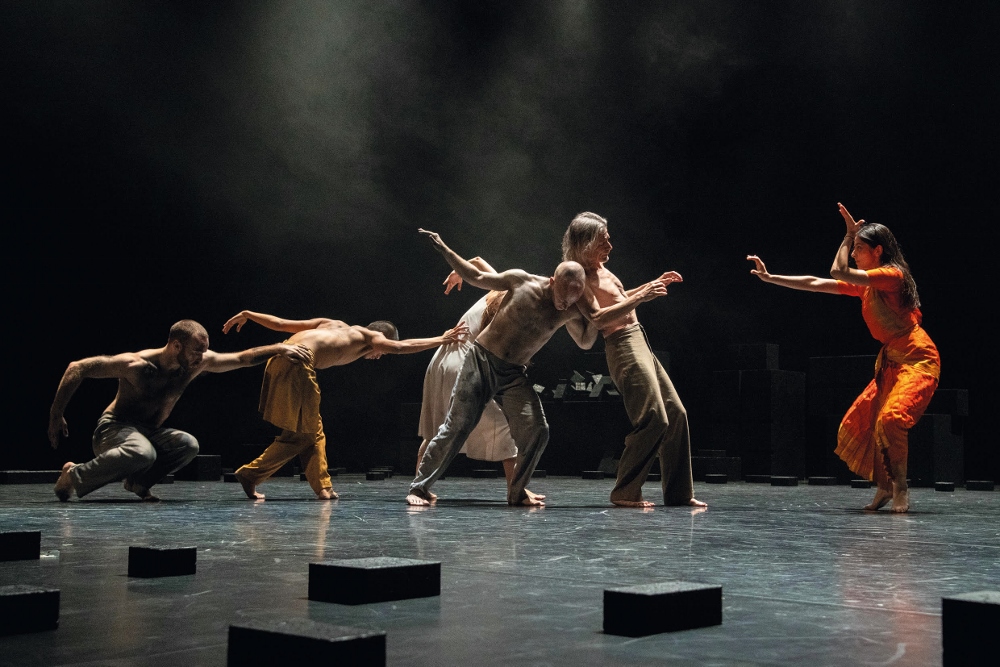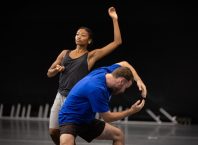
Powerful and evocative, Akram Khan’s Outwitting the Devil is a work for six dancers that takes place in a mysterious realm where past, present, and future meet, entering the dark places of the soul. The dancers are breath-taking in their expressive performance, fluid, precise and intensely physical. All the elements of the production – music, stage design, costumes and lighting, work with the choreography to create an intense experience, with a sense of mythic resonance.
Inspired by the ancient Sumerian Epic of Gilgamesh, the work refers to a particular chapter in the youth of Gilgamesh, who dreamed of fame, and the city of Uruk as a monument to his greatness. He befriended the wild man Enkidu, and together they set out to the Cedar Forest, where they cut down the trees and killed Humbaba, the guardian of the forest. For this senseless destruction and violence, Gilgamesh was punished by the gods. In Khan’s work, Gilgamesh is an old man, wonderfully portrayed by the dancer François Testory in the performance at the Israeli Opera, who looks back on his past with the understanding acquired by time and experience. The music of the soundtrack is interspersed with spoken text, his words in French are translated into Hebrew in the surtitles, and the sound of his voice, contributes to the ruminative, haunted mood of the piece. The opening phrase concludes with the words “The young man cannot imagine the old man he will become,” and the entire work is permeated with a sense of introspection and regret.
Known for his distinctive movement language, which merges Indian Classical Kathak with contemporary dance, it is evident that Khan has very successfully transmitted his unique form of expression to his dancers. The serpentine fluidity of their movements is accented by precise articulation, in which every limb, every muscle is a conduit of feeling. The sense of flow is mesmerizing, and when it is cut by an abrupt, instantaneous staccato transition, the effect is stunning.
Although the dancers eloquently convey its turbulent emotions, the underlying narrative is difficult to follow from the work alone. A viewer who is unfamiliar with the inspiration for this work will not have the same experience as one who has read the background, either in the program or other media describing the work. A knowledge of the background enriches the viewing, especially in connecting the destruction of the Cedar Forest to a sense of environmental responsibility. Yet even if one does not read a single word in preparation, Khan and his creative collaborators communicate a sense of awe, the passions of life, and the tortures of memory.





